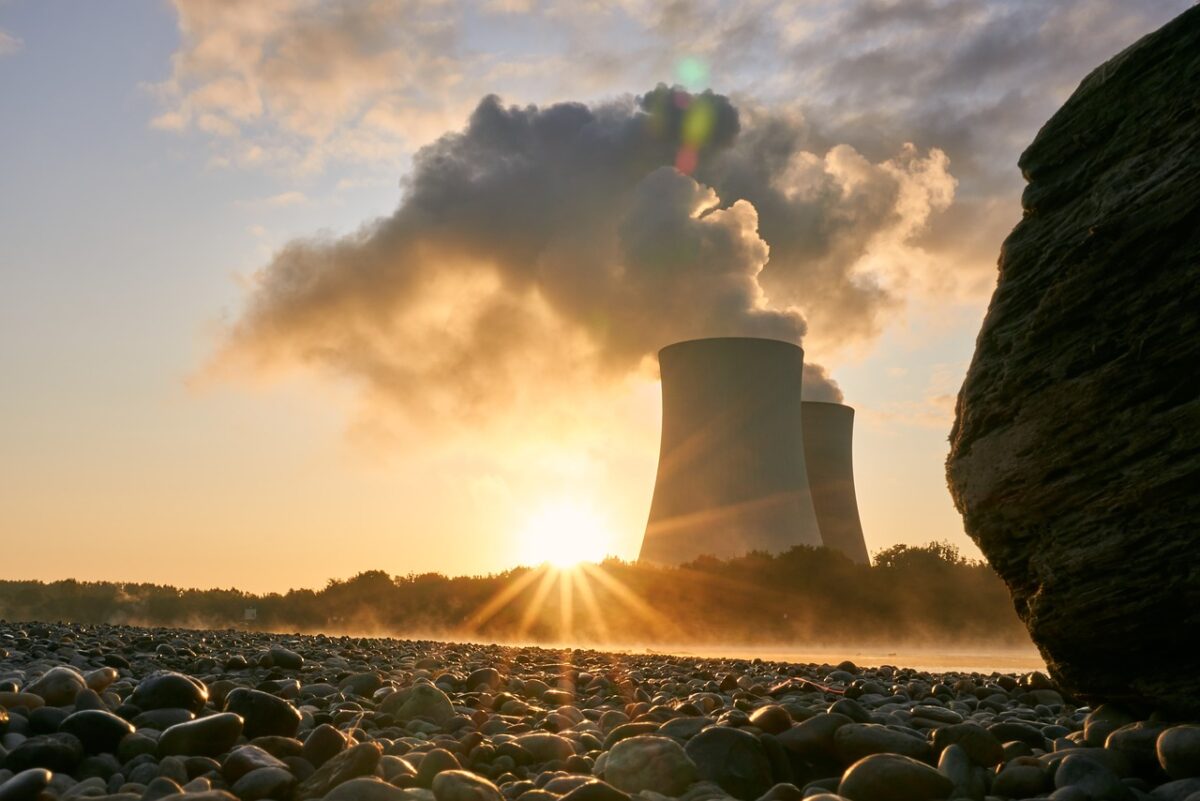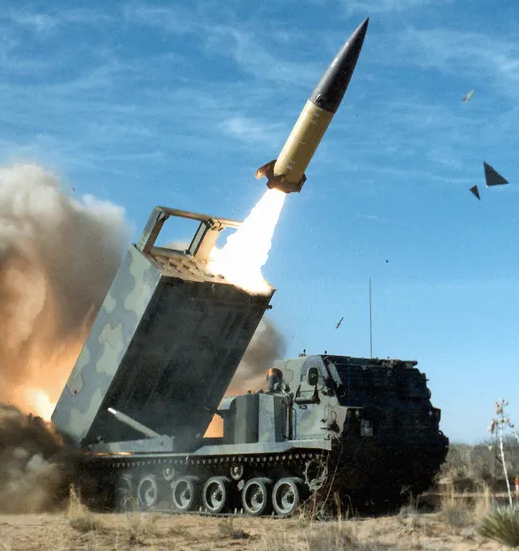So first off, the source of this article being pv-magazine makes me immediately skeptical about unbiased reporting. This part really gets me though:
The availability of this electrical source is also questioned in view of the increasingly frequent droughts expected in the coming years, causing, in particular, low river flows and therefore associated problems of cooling power plants.
And availability is not a problem with renewables then? If not the central problem? Hydroelectric is probably the most reliable of the renewables, but then we have the aforementioned problem of low river flows. Droughts could even affect pumped hydro: a much-touted solution to availability problems with wind and solar. For crying out loud, present both sides of the argument fairly! /end rant
At any rate, I can get on board the idea that in terms of adding new generating capacity, renewables may be the most competitive option at the moment? They have come a long way in a short time, though they still face major challenges on the energy storage front.
But in terms of getting away from existing fossil fuel-based power generation, is nuclear not an attractive option? The infrastructure is already there, and would essentially have to be largely abandoned as sunken assets by power utilities switching to something like wind or solar right?
Consider your average coal plant. It is a centralized heat source powering steam turbines connected to large generators and a giant transformer station feeding power out over a network of high voltage transmission lines.
What is a nuclear plant then? It is a centralized heat source powering steam turbines connected to large generators and a giant transformer station feeding power out over a network of high voltage transmission lines. I’m thinking at least some of the existing hardware could be repurposed for nuclear to leverage what already exists? Am I wrong?
Droughts could even affect pumped hydro: a much-touted solution to availability problems with wind and solar. For crying out loud, present both sides of the argument fairly! /end rant
Pumped hydro doesn’t consume nearly as much water as a thermal generator. Especially if you cover the reservoirs. It also gives you an emergency backup.
Would you prefer:
Option A where you immediately have no power when the river gets low,
Or option B where you still have power after the river gets low, but can also choose to give up the ability to have some of your power at the end of a week long cloudy period in exchange for water?
Good point. I am not opposed to pumped hydro or other such schemes for storing energy. Nuclear itself tends to be employed for base load power generation and is not especially good at following demand variability. Having supply side variability (from solar, wind, etc.) makes matters worse, of course, and necessitates even more storage. But one way or another, it will be needed, and pumped hydro tends to scale better than say battery farms.
I wonder about option B. As it stands where I live at least, there is not much wiggle room in terms of getting people to use less power in the event of a shortage. For example, the local utility has offered free programmable thermostats in exchange for giving them the ability to control power usage in the event of a shortage, but I understand uptake of the program has been low thus far. I suspect in that scenario, they would have to bring fossil fuel power generation online.
Where I live is not in a drought-prone area at least, but it is also not suitable for pumped hydro given the geography. There was talk in the local news recently about a compressed air storage system that may get built nearby our natural gas plant. This juxtaposition makes some sense when you think about it, since it is a site that already features well-established grid hookups, so they can piggyback on that. The province as a whole is generating something like 60% nuclear, 32% renewables (mostly hydro), and 8% fuels. Recently, there was a major refurbishment of some of the nuclear reactors and it came in on budget and ahead of schedule, so the argument that anything nuclear must automatically involve cost overruns is perhaps no longer true, though good lord we have seen some epic ones in the past, particularly after the utility was privatized.
deleted by creator
Ecofanatics just deny any source that says nuclear is good anyway, especially RTE. You make a good sum up though.
I wonder how this determination is affected by the boondoggle that is the public funding of nuke plant construction with huge overruns paid for by consumers.
It’s getting close to the point where even if you are handed one it’s more cost effective to build a wind farm and let it sit.
A MWh of wind is about $33 and O&M for a MWh of nuclear is about $30.
That’s pretty damn cool to hear.
I wish my country (Germany) hadn’t crash-shutdown the nuclear power plants we still had after Fukushima and instead shut down the coal/gas ones but eh… at the time, I even agreed with them, but that was at a time when climate disasters were far less prominent on everyone’s minds. That now renewables are starting to pull ahead in most things is amazing.
A big problem to solve now will be how to swap the majority of the world away from coal/gas.
Really interested and quite easy to read article. In fact, the french energy policy is to invest in new “little” nuclear plants. I’m not sure our politics will consider these scientifical comments…
They still seem to handwave away the issue of baseload, which is entirely frustrating. As I seem to understand it, it’s just a 1:1 comparison of costs.
They use nebulous phrases like “Flexibility is more important” and point to batteries or energy saving methods getting cheaper, without actually including it in the comparison.
Although if it’s true EU plants were randomly closed from production 50% of the time baseload doesn’t really make a difference I guess.
“Baseload generator” isn’t a useful concept. And grid reliability (which is a useful concept) is thought about. It just doesn’t fit into a soundbite like winddon’tblowsundon’tshine.
Here’s an example of a full plan https://aemo.com.au/en/energy-systems/major-publications/integrated-system-plan-isp/2022-integrated-system-plan-isp
Or a simpler analysis on the same grid: https://reneweconomy.com.au/a-near-100pct-renewable-grid-for-australia-is-feasible-and-affordable-with-just-a-few-hours-of-storage/
For reference, 5kWh home batteries currently retail for about $1300 so this would add <10% to the capital cost compared to recent nuclear projects. Pumped hydro is about half the price per capacity, but a bit more per watt. The former is dropping at 10-30% per year, so by the time a nuclear plant is finished, storage cost would be negligible.
Here’s a broad overview of a slightly simplified model https://www.nature.com/articles/s41467-021-26355-z demonstrating similar is possible everywhere.
Even in the counterfactual case where the ~5% of “other” generation is only possible with fossil fuel, focusing on it is incredibly myopic because the resources spent on that 1% of global emissions could instead be used for the other 70% which isn’t from electricity and has different reliability constraints.
Doesn’t the Australian model ask for a 4-6% fossil or other fuel input? I don’t see how base load, nuclear or other fuels aren’t relevant to discuss, as nucleur is like 4% of global output right now.
Four points:
The profile of other is short spikes 5-100 hours a few times a year.
1 year of delay is equivalent to 20 years of exclusively using fossil fuels for “other”.
It’s not even obvious that adding nuclear reactors would reduce this because they’re so geographically and temporally inflexible. France has 63GW of nuclear capacity, <45GW of average load and 61GW of winter peak load with vast amounts of storage available via interconnect to hydro countries. They still use 5% gas on top of the rest of the “other” (which is about 10-25GW).
5% of other from gas adds about 20g CO2e/kg per kWh to the total. Less than the margin between different uranium sources.
Running 40% of the capacity 10% of the time puts your nuclear energy in the realm of $1-3/kWh. The list of ways of generating or storing 6% of your energy for <$1/kWh is basically endless.
That’s about 4-8TW of capacity worldwide. 1kg of uranium is good for fuelling about 750W of reactor on a 6 year fuel cycle. Loading those reactors would require digging up all of the known and assumed-to-exist uranium immediately.
Nuclear is an irrelevant distraction being pushed by those who know it will not work. You only have to glance at the policy history or donor base of the politicians pushing for it in Sweden, Canada, Australia, UK, Poland, etc etc or the media channels pushing it to see how obvious it is that it’s fossil fuel propaganda.
It is obviously obviously true that it’s a non-solution. It fails on every single metric. All of the talking points about alleged advantages are the opposite of the truth without exception.
I don’t know enough about the topic to have an argument against, just trying to educate myself. I am curious how you would respond to this person in another thread:
https://jlai.lu/comment/1510040
I assume your response would be essentially similar to your previous comment. That we can develop the battery tech and it would be easier just to use fossil fuels as a bridge anyway?
Its a relatively recent development however since the panels and turbines got quite a bit cheaper. Nowadays solar/wind ends up fairly similar and Nuclear is about 3x the price (with gas being more and coal being nearly 7x more). That is only some of the story as you need some storage as well but it doesn’t end up in favour of Nuclear. 15 years ago Nuclear was a clear win, its just not anymore the price of Solar come down fast.
If you include the full costs of the nuclear programs including the various subsidies, wind has been cheaper for decades, possibly since before nuclear was a thing.
What about when the grid is almost entirely renewables? Is nuclear cheaper than just storage? What about storage one it’s already been implemented to the point of resource scarcity?
1kg of lithium produces about 10kWh of storage for 15-20 years. 3-12 hours of storage is plenty for a >95% VRE grid.
1kg of uranium produces about 750W for 6 years.
There are about 20 million tonnes of conventional lithium economically accessible reserves (and it has only been of economic interest for a short time).
There are about 10 million tonnes of reasonably assured accessible uranium (not reserves, stuff assumed to exist). It has had many boom/bust cycles of prospecting.
Lithium batteries are not even being proposed as the main grid storage method.
Cobalt is the difficult one, especially with the child workers mining it.
Cobalt isn’t even in most EV batteries anymore, and LMFP is replacing NMC next year.
Sodium ion will then replace LFP the year after.
It’s also real weird how people only ever care about french colonial exploitation of africa when it comes to materials they pretend are in renewables and not when they’re flooding villages drinking water with uranium tailings.
No, nuclear is always more expensive in real world conditions. Places with mostly renewables plus in-fill from batteries and transient gas generation are a lot cheaper than nuclear. eg. South Australia.
But transient gas generation produces much more ghgs than nuclear, and when accounting for the ghg potential of metanen and normal pipeline leakage, it is even more damaging than coal.
It’s required less and less as other forms of generation are added to the mix. eg. Tidal and pumped hydro.
Except overprovisioning your total load by 30% with nuclear capacity doesn’t allow turning the transient gas off
More profitable AND safer. Humans are too stupid, lazy and bureaucratic to use nuclear.
Not actually safer, per kilowatt hour though.
Everyone seems to be focused on electricity production, but ammonia production (ie nitrogen fixation) for fertilizer is often overlooked. Right now it is accomplished mostly with natural gas. If we’re supposed to do it instead with wind and solar, we’re going to have to rely on simple and inefficient electrolysis of water to generate the hydrogen needed for the Haber process. Nuclear power plants have the advange of producing very high temperature steam, which allows for high temperature electrolysis, which is more efficient.
When you consider our fertilizer needs, it becomes clearer that nuclear power will have to play the predominant role in the transition away from fossil fuels.
No on all fronts.
The only reactor designs with any sort of history don’t produce steam at high enough temperature for the sulfur cycle and haber process.
The steam they do produce costs more per kWh thermal than a kWh electric from renewables with firming so is more economic to produce with a resistor.
Mirrors exist. Point one at a rock somewhere sunny and you have a source of high temperature heat.
Direct nitrogen electrolysis is better than all these options. It’s had very little research but the catalysts are much more abundant than hydrogen electrolysers and higher efficiencies are possible.
Using fertilizer at all has a huge emissions footprint (much bigger than producing it). The correct path here is regenerative agriculture, precision fermentation and reducing the amount of farmland needed by stopping beef. Nitrogen electrolysis is a good bonus on top of this.
One way or another, I’m pretty sure that we need fertilizer. What is the source of GHG if the fertilizer is produced without natural gas or other fossil fuels?
NO2, methane from byproduct/digestion, soil carbon release from land overuse. Downstream methane release due to nitrate pollution.
The overwhelming majority of cropland is for “biofuel”, industrial chemicals and animal feed.
Industrial scale regenerative agriculture has lower yields in the short term, but doesn’t emit NO2 and leave behind a dust bowl (requiring clearing a new forest).
Eating crops directly rather than feeding cows is far more effective than changing fertilizer source. Eating organic crops uses a small fraction of the crop land that eating beef fed on intensively grown corn does.
Biointensive methods have many times the yield as industrial agriculture but are very labour intensive – automating them would save a lot more emissions.
Precision fermentation uses a tiny fraction of the land per unit of protein/nutrients.
Eating crops directly rather than feeding cows is far more effective than changing fertilizer source.
cows eat a lot of grass, and usually from land that isn’t suitable for crops. the silage they get is mostly parts of plants that people can’t or won’t eat.
Yes, we’re definitely going to have to set up more nuclear power plants specifically to make fertilizer. Nuclear heads are literally brain dead
Fertilizer which they can’t make because the steam isn’t hot enough.
Every single pro nuclear argument is a fractal of terrible ideas and gaslighting.
If we had an energy system owned by the people and not ran for profits, nuclear would be a viable, and probably even the preferred, option. We do not. We’re probably going to have to fix that to get a practical and reliable clean energy grid.
No, it would just bankrupt the state. Just because something is state owned, doesn’t mean the cost vanishes.
Infrastructure in this country is already so heavily subsidized by the federal government (and state, if you live somewhere that actually cares about your well-being) that we’re already pretty much paying for it all.
What do you do with the waste in that scenario? Who pays for that? Or for insurance?
Gotta love anti nuclear activists getting more and more desperate. You’re being decarbonised. Please do not resist.
I would love to be decarbonised, but unfortunately i dont have the patience to wait 2 decades for it to happen.
How long do you think it takes to build renewables? It’s been about 20 years since most countries have started implementation and no country is 100% reliant on renewable energy or could store even a night’s energy needs without generation.
You can build a 50MW wind farm in 6 months
It’s been about 20 years since most countries have started implementation and no country is 100% reliant on renewable energy or could store even a night’s energy needs without generation.
Lot to unpack here.
There are actually a few countries that have 100% renewable capacity such as Iceland or Scotland and a lot more that are very close.
Yes we could be 100% renewable by now but the ff industry has done a lot of lobbying and conservative politicians have dragged their feet.
It has been a lot longer than 20 years since countries started building nuclear, yet were not 100% nuclear, is that a fault of the technology? or the politicians and NIMBYs?
Wind works at night, so you dont really need to store a nights worth of energy, especially as energy consumption is much lower at night.
Decarbonised by a stagnant and expensive industry that’s friends with coal? Unlikely.

https://i.imgur.com/4z837gc.png
nuclear energy is stagnant and decaying.
nuclear energy is stagnant and decaying.
Do you think you may be confusing the cause with the effect?
Alright, tell me how many more nuclear reactors are needed globally. Let’s just start with decarbonizing electricity production.
And, next, tell me how long do you think that will take, judging based on the average reactor construction time since, say, 1990.
Or look it up, maybe someone wrote an article with such a response.
The best time to build them was decades ago, so clearly the second best time is to… Never? Your argument is taken straight from the oil and coal industries – it would take too long to build up renewables infrastructure, so let’s just not do it? We shouldn’t build windmills, because you can’t tell me how many we need globally?
You’re grasping at straws. If you care about climate change, and you trust in science, there’s only one valid viewpoint on nuclear energy. I welcome dissenting opinions however and would be more than happy to hear why you disagree. Just know that I took courses in college on nuclear reactors and their design as part of my degree, as well as environment engineering, and I currently work in the green energy field – by no means am I automatically correct, but I want to see an argument that’s based in science and recent scientific studies and analysis, let’s say anything past 2015.
I could not disagree more. Renewables are cheaper safer easier to deploy and secure the grid. Nuclear is dead.
Nuclear is the safest energy. It has the fewest deaths per kWh produced. Some modern reactors are able to consume nuclear waste to generate fuel as well. If you want to minimize nuclear waste, we need to build at least some reactors to shove existing waste into.
Nuclear keeps our already unsafe grid more unsafe. It’s too expensive and accidents, while rare, are disastrous. Nuclear is dead.
The best time to build them was decades ago, so clearly the second best time is to… Never? Your argument is taken straight from the oil and coal industries – it would take too long to build up renewables infrastructure, so let’s just not do it? We shouldn’t build windmills, because you can’t tell me how many we need globally?
You seem to be unaware of the plans and needs to reduce GHGs. We do not have decades to waste.
You’re right, and that’s why it would be foolish to build exclusively nuclear. It’s also foolish however to not build any nuclear. The long lead time means we need to start ASAP so it’s ready ASAP. With proper government action targeting bottlenecks in the process (I believe there’s only one manufacturer in the world for a certain type of reactor shielding) we can speed that up.
Diversification is the way to go. At the very least, we should build enough reactors and breeder reactors to consume existing nuclear waste and drive that to effectively 0.
On top of all that, the bottleneck for deploying solar and wind en masse isn’t actually solar and wind facilities (although we certainly need those) but our electric grid. It needs an upgrade in order to integrate alternative energies, and I believe estimates on doing that are ~10 years. We might end up in a situation where a nuclear reactor is actually faster to build, depending on the type.
The question has always been what does one do when the renewables aren’t providing enough power (ex: nights, etc). The current solution is natural gas. It would be a big improvement if we would use a carbon-free source like nuclear instead.
The growing idea is to just have a shit load of renewables, everywhere. The wind is always blowing somewhere, and the sun shines through the clouds. If you have a ridiculous excess total capacity then even when you’re running at limited capacity you could still cover the demand. Basically, most of our renewable infrastructure would actually be curtailed or offline a lot of the time.
And that opens up opportunities for energy intensive industries like aluminium or hydrogen production to run whilst there’s an excess of energy
I’m all for green hydrogen production, it’s using hydrogen in place of fossil fuels that bothers me. We already have a shit load of demand for hydrogen from industrial uses, and it would take 3x the world’s total renewable capacity in 2019, dedicated solely to hydrogen production, to meet this with green hydrogen. If we start adding transportation into that demand we’ll never make it, and it will be far less efficient than other energy sources (eg batteries).
So yeah, we should have green hydrogen production, but we shouldn’t listen to those same people when they say they think it should also be used for transportation. That’s just trying to increase the size of the market to increase profits.
Hydrogen works well with a renewable grids because you can take advantage of the times there is excess energy production so that power doesn’t just go to waste.
We do need to be careful because hydrogen is often sold as a pipe dream by gas companies to convince us to use gas (e.g. “this new gas turbine power plant can be converted to hydrogen”, even though that’d be a workload less efficient than fuel cells).
As for its use in transport, it looks like battery electric vehicles have won that battle for personal vehicles. Both have their advantages but in practice there are few enough fuel stations for hydrogen and enough chargers that that’s not going to flip.
However, batteries are entirely unsuitable to long distance, high load transport like trucks. Ideally they’d be replaced by rail, but that’s not happening anytime soon in many places so hydrogen likely will be the solution there.
While I agree completely, it is troublesome that you, BombOmOm, are saying this… :/ username checks no fly list out.
Pumped-storage hydroelectricity is an old and proven method for load balancing intermittent power sources. Would like to see more of that as geography permits.
That will not remotely cover baseline loads and is not without significant efficiency loss due to the pumping phase.
All commonly used forms of energy storage have some efficiency loss. Pumped storage is not perfect but my understanding is that it usually comes at a 10-25% loss, which isn’t all that shabby all things considered.
The “as geography permits” part is a big obstacle, unfortunately.
Not in China.
Actually it isn’t if you stop only looking at places that are also suitable as power plant, that is, have a big river flowing through them.
You can do pumped hydro in an old mineshaft.
Can you? To store the energy you need to pump up; to use it you need to flow back down. Where is the ‘down’ or ‘up’ from a mine shaft?
I’d also question if the volume would be worth it.
Edit: maybe you are thinking compressed air?
…the up is at the surface and the down is at the bottom of the mine shaft? I’m not talking about horizontal ones, of course. You let water in, generating power, and then, to regenerate empty space and with that the capacity to again generate power, you spend energy to pump it up.
As to volume, there’s some gigantic mineshafts, but even small ones might warrant small installations it’s not like some pipes and a pump and generator are much of an investment. Of course, don’t try that in a salt mine geology will play an important part.
And lastly: Mineshafts aren’t the only option. There’s a lot of mountains, and they have many sides, and also plateaus and valleys. Build two concrete basins, connect them via pipe, ship in water from somewhere, voila, pumped hydro storage.
It’s an obstacle for anything, including nuclear. Just ask Japan.
According to the article, the researchers concluded that nuclear reactors are not a good fit for that role.
consumers may also help reduce system costs by adapting their electricity consumption to the availability of renewable energy
From the linked paper. They mention some other options for storage like batteries (plenty of environmental issues there though) but based on the quoted text I have a hard time taking this seriously if they actually expect people to change their behavior.
I think innovation at the consumption end is going to help a lot. On Technology Connections I saw an electric induction stove that could be powered from a regular socket. It had a battery that would trickle charge throughout the day and then use the batteries to power the induction cooktops, as well as a couple of plugs. If widely deployed and in other appliances, with a little smarts that could provide power leveling at the home level.
Another solution would be adding some intelligence to water heaters. Have a temperature control valve on the output where you set the temperature, and program the water heater get to 160-180°F when electricity is cheap. This would be a thermal battery that would easily level out demand for electricity for heating water.
Or you could do thermal storage by heating a house very warm/cold prior to a large cold snap/heat wave, and letting it coast down/up to a temperature instead of heating/cooling a lot during the cold/hot weather. He’s got a video on this technique here
Another solution would be adding some intelligence to water heaters. Have a temperature control valve on the output where you set the temperature, and program the water heater get to 160-180°F when electricity is cheap. This would be a thermal battery that would easily level out demand for electricity for heating water.
This has been done for close to a century in wind or run of river hydro heavy countries (as well as some coal ones).
The water heater has a buffer tank and is attached to a meter that only runs when a signal is sent across the power line. This stores about 20kWh for a 300L tank.
Modern insulation would allow going up to a few m^3 for a couple weeks’ worth.
Combine that with some radiant floor heating on a nice thick concrete slab and you could use the battery for home heating. (Though it would need a lot of water.)
Here is an alternative Piped link(s): https://piped.video/watch?v=0f9GpMWdvWI
Piped is a privacy-respecting open-source alternative frontend to YouTube.
I’m open-source, check me out at GitHub.
Plug in car. Press the “I would like to only pay $100/yr to fuel this please” button.
Later when you leave for work press the “I would like the house to be cool when I get home and also want to pay half as much for AC” button.
Buy the 1.5m wide water heater that stores 10kWh of hot water and lasts a week between heatings rather than the 70cm one that lasts a day.
Such an unconscionable burden.
“Not enough power from renewables? Just turn off your fridge for a few days and you’ll be fine!”
Honestly that sentiment has strong “blame the consumer” vibes that seems to pervade climate arguments.
Sure, people can reduce consumption, but at best its a stopgap, not a solution.
There’s stuff like heaters and to a degree things like washing machines that can shape the time they’re active to whenever there’s a lull.
Consider Britain: Each time the BBC runs a popular show you get an energy usage spike once it’s over because people are getting up and make themselves a cuppa. Doesn’t really make sense to run the heater in the tank for your shower at the same time, or charge your car, that can wait a bit.
Nuclear is not, and cannot be, a gap coverage solution. Due to xenon/iodine poisoning and decay heat management you need to keep a reactor critical as long as possible to be economical. That’s independent of the problem of keeping the water hot that fossil fuel generators share. You can’t just turn a reactor on and off.
Columbia station load follows within a certain range set by nearby hydro. It can be done. The economics aren’t even that bad, as fuel is one of the cheaper inputs to the reactor.
It can provide a baseload though where solar can provide extra power during the heat for places where the summer and days are the power intensive part, rather than winter and nights. You still need a short-term stop gap as the sun sets but it’s still hot out, but even if that was just powered by NG it would be a huge step forward. Adding greener energy storage options to store extra power nuclear or wind could generate overnight would be better.
Btw, could a small percent of nuclear reactors be turned on/off seasonally, potentially transporting fuel between the north in the winter and the south in the summer?
Yes, but if you spend the money making a reactor, you really should just use it. Uranium is pretty cheap, it’s the reactor that’s expensive.
Fair. If a grid was just powered by batteries, solar, wind, and existing nuclear plants, which would be the most effective to turn off when demand is too low?
Keep the reactors running to avoid that issue. As long as they are providing enough power when the renewables aren’t, we successfully cut out natural gas from the power grid.
We have to start looking at personal renewables more? Each home could have their own small windmill or solar panel. Let’s point in that direction.
What makes you think personal renewable are going to be more efficient than large scale renewables? The sun doesn’t magically shine in the middle of the night on personal homes, the wind doesn’t magically blow only in residential areas…
The renewables-only crowd is just ignorant about this simple fact.
The future of energy will be dominated by solar and nuclear power. With hydro, geothermal and wind playing supporting roles, depending on geography.
The only question is, how much fossil fuels do we burn until then?
Those who oppose nuclear are really just in favour of burning fossil fuels in the interim. But the inevitable switch to nuclear will come as fossil fuels are depleted.
Nature has given us the atom as the most dense and durable way to store energy. That will never change.
Typical energy density of ore in a new uranium mine burned in an LWR is about the same of coal.
All of the economic/not too damaging stuff together would power the world for about 3 years.
Nuclear is a terrible fit for peaker plants, that’s not how it works. If it isn’t selling energy at as close to 100% of the time as is feasible it’s losing money.
Here’s an example of what can be done with 5 hours of storage. 5 hours is a 25% participation rate of V2G where the participants offer a third of their battery capacity.
If going with the (false) assumption that nuclear can hit 100% grid penetration, it would take decades to offset the carbon released by causing a single year of delay.
The lowest carbon “let’s pretend storage is impossible and go with 100% nuclear” would still start with exclusively funding VRE.
Lol at trying to pass that link off as a valid, unbiased source.
lol at a rando discrediting an article that gives supporting data. Did you even read it? Write your own well supported opinion and submit it here. We’ll wait.
Oh is that a new rule? You can’t point out garbage, bias sources unless you’ve written a dissertation on it? Fucking rube.
Good point. You are a garbage biased source.
Great comeback. Very cute.
But why don’t you go ahead and go get a juice box and let the adults speak.
TIL an “adult” is someone who denigrates a link without even reading it or having any substantive data points to support their points. Sounds like you have plenty of juice boxes to give out.
The best solution is having EVs plugged into the grid at night. VTG is the easy solution to peaker needs.
Then you are getting into the issue of the power company eating up your charge cycles on your EV battery. Who pays for the fact that my battery now has half the design lifetime due to constant cycling because it’s feeding the grid?
These are easily solved details. For example, by providing power on the grid you are in essence a power company. Perhaps you get reimbursed based upon what you provide. You know net metering is already a thing, right?
I’m just saying that we might need to get away from the idea that a car battery is solely an owner expense. They’d have to be subsidized or there would be huge equity issues. And yes “I do know about net metering,right.”
Yes you are correct in stating that if you used your car battery for grid usage you would need to get reimbursed for that. And I gave you an easy solution. This could actually be a profit center for EV owners and if you have your car plugged into the grid at peak times, you would get reimbursed more per kWh (ie TOU) with the net metering. Win/win for everybody except utilities and fossil fuel providers.
at night perhaps they could sleep
This is such a weird thing to research because a government (or governments) can directly or almost directly control what is profitable in a society based upon what is needed.
not really, while the government can do stuff like incentivize this only shifts the cost somewhere else
Check out the farm bill, or ethanol in gasoline, or various other things. They also can disincentivize things, outright ban things, and add untold cost to competing stuff in order to make yours more profitable than theirs.
The research done here had to be within the existing regulatory environment, which is not a fixed constraint at all but rather a product of government and industry actors.
And all of that is just talking about more indirect controls commonly applied in neoliberal leaning countries, some countries directly control how much things cost and how much overhead there is.
Government can just take over and control whatever it wants. With no business allowed to operate the cost and therefore profit don’t matter
If you wanted to subsidize nuclear energy, yes.
Howrver, taxing renewables would reduce their profitability without requiring resources from somewhere else.
Profit doesn’t equal good. Renewables take a lot of materials and fabrication to upkeep. Im sure theres more money to be made in renewable than there is in nuclear, that doesn’t imply one is better than the other.
K, but this isn’t about profits. This is about not destroying the environment, which nuclear can help with (you know if nobody bombs the plant)
But it’s also about cost. Nuclear is far more expensive upfront, more expensive to maintain, and more expensive to decommission. Cheap, agile renewables will be an easier option for the vast majority of the planet
We would be really stupid to worry about money when trying to save the planet. But, what did I know, I’m just some guy on the internet
Financiers tend to worry about money, yes.
First option: a wind/solar plant with costs that aren’t going to increase substantially, power being sold within a couple of years therefore repayments will begin quickly.
Second option: a nuclear proposal - massive costs upfront, that will inevitably skyrocket while the completion date slips and slips, and power being sold 10-15 year in the future so repayments are a long way off.
It’s not a difficult choice.
If your argument is that we should nationalize the energy sector so government can get involved more directly to mitigate financing issues, sure. We both know that’s not going to happen.
How does one provide power when the renewables don’t provide enough power (nights, etc)? Our current solution is natural gas. Nuclear is a huge step up as a carbon-free provider.
Storage, there are many options. Pumped hydro is great for places with elevation change, molten salt is great for desert climates. Batteries, green hydrogen, compressed gas, etc.
We’ve been storing energy for thousands of years. It’s not difficult in the way nuclear fusion, SMRs, or thorium are difficult.
We’re also moving towards EVs. I’d like to see investment in using a fleet of connected EVs as a giant battery. Your energy company can pay you for making 10-15% of your EV battery available for grid storage and you can opt out if you need that extra range for a trip.
The largest battery on the planet would power my workplace for less than two hours- if it could meet the instant demand, which it cannot.
I’m all for energy storage, but I realise there’s a lot of work to do.
1,200MW isn’t enough? Where do you work?
Why do you think batteries can’t meet instant demand? That’s kind of their whole thing.
The article talks about the coming droughts and water shortages. Pumped hydro is nice, if you have water.
There’s evaporation, which can be mitigated by floating solar panels, but pumped hydro is a closed system, it doesn’t consume water.
Ah, yes, love my last vacations in chernobyl
Everything is about profits. Otherwise we wouldn’t even be in this mess.





















